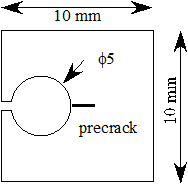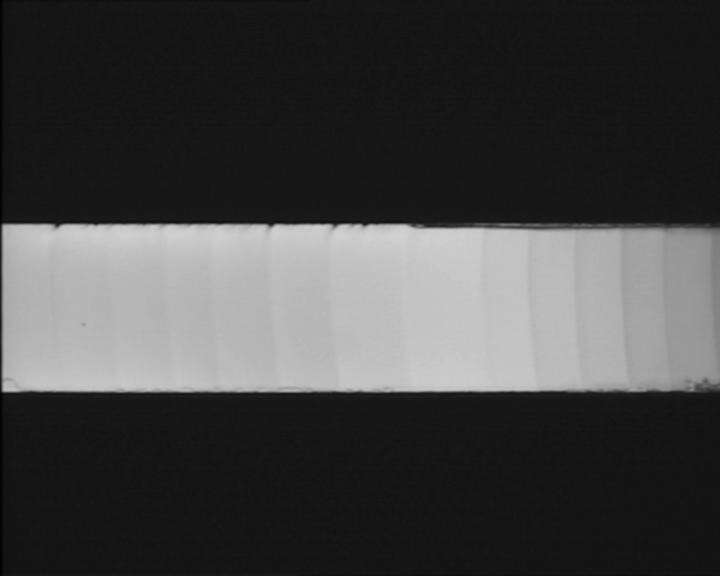
ATOMISTIC FRACTURE MECHANISMS ALONG STABLE CRACK SURFACE
2Faculty of Engineering, Tel Aviv University, Tel Aviv
We present a new method to cleavage brittle materials, where the crack propagates in a stable manner. Currently, the specimens are thin and rectangular (10x10 mm2), cut from commercial available wafers. An atomistic sharp crack is emanating from a hole drilled in the specimens (Fig. 1a). The thermal expansion coefficient mismatch between the specimen and an aluminum pin, tightly inserted into the drilled hole is the main cause for cracking. Upon heating the assembly by nearly 300C, the thermal expansion coefficient mismatch generates sufficient driving force to initiate and propagate the crack. The crack is propagated by cycles of initiation, short propagation, and arrest, exposing markings of the arrested fronts on the fracture surfaces (Fig. 1b).
Due to the small specimen size, the method was used to detect atomistic events along the crack front. The assembly was fractured under UHV (Ultra-High Vacuum) conditions, and the exposed fracture surface was then scanned by STM (Scanning Tunneling Microscope). The atomistic structure along the crack front was revealed. We will present the method and the atomistic structure of crack propagating on the (110)[1-10] low energy cleavage system of silicon crystal.


Fig. 1. The new and small specimen for STM analysis; (a) schematic drawing of the specimen; (b) the fracture surface with arrest/initiation markings. Specimen thickness is 680 mm.
Powered by Eventact EMS